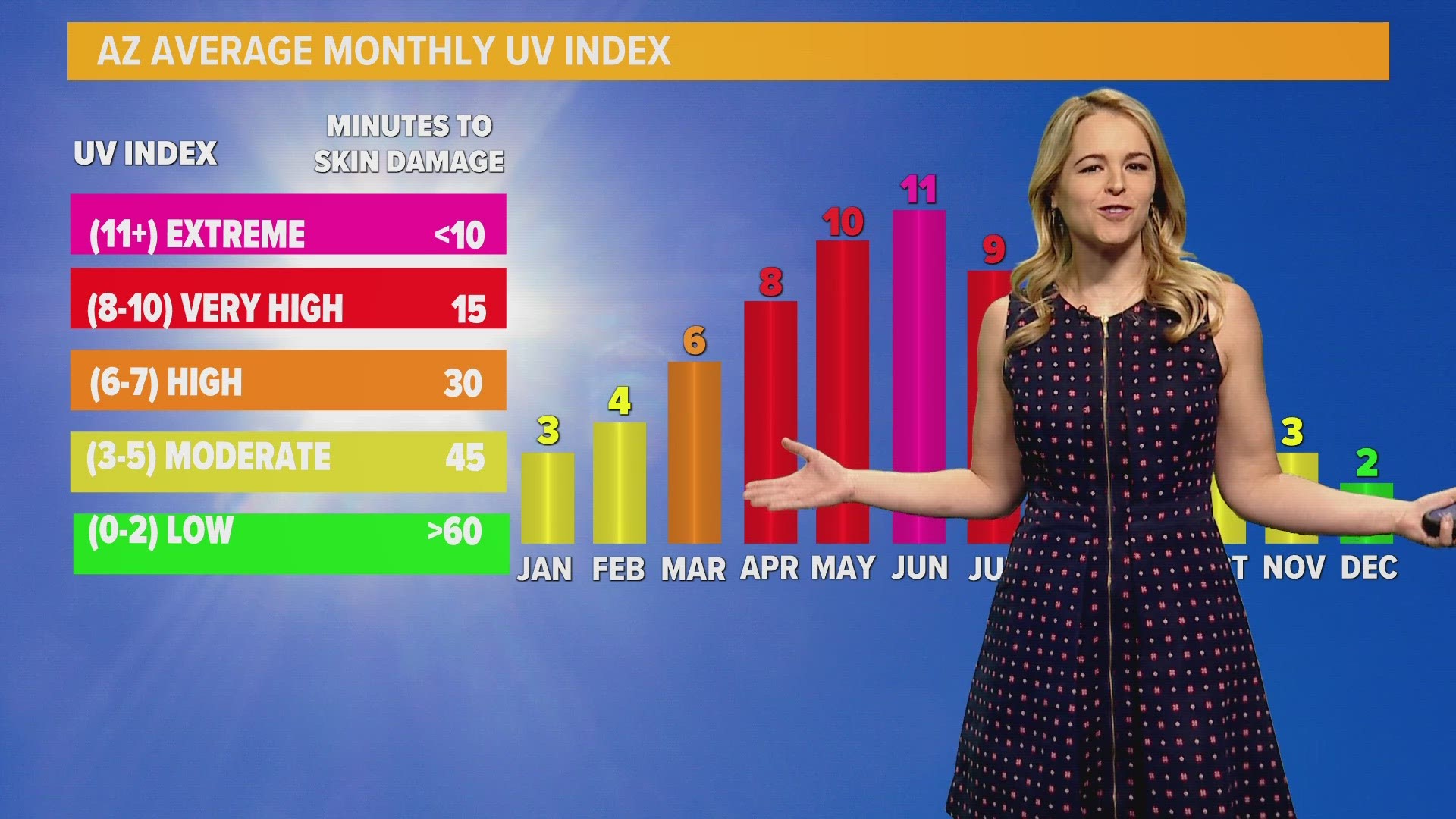PHOENIX — The spring months typically feature some of the best weather in Arizona. As you spend more time outside, you'll want to pay close attention to the UV (ultraviolet) index forecast.
The UV index is an even bigger deal here in Arizona compared to other parts of the country. You'll often see the UV index in Meteorologist Lauren Rainson's weather forecasts almost all year round.
VERSIÓN EN ESPAÑOL: El índice UV es alto en Arizona, pero ¿qué significa eso?
The UV index provides a daily forecast of the intensity of the sun's ultraviolet radiation. Cloud cover and the time of year impact the sun's intensity. While some sunlight exposure is good, too much can be dangerous.
Too much sun exposure can lead to sunburn, skin cancer, and eye damage, such as cataracts.
When you look at the UV index, you see it shows a scale from 0 to 11+. When the UV index is low (0 to 2), you can safely enjoy the outdoors without fear of skin damage. It's still recommended to wear sunglasses on bright days, and wear SPF 15+ if you easily burn. Also keep in mind that during the winter, reflection off the snow can double the UV strength.
Moderate UV is in the 3 to 5 range. This means you can burn in 45 minutes if you're not careful. On these days, you'll want to wear sunscreen, a hat, and sunglasses. SPF 30+ is recommended.
A high UV index is a 6 to 7 on the scale; this means a burn time of 30 minutes. You will absolutely need sun protection. On these days, consider wearing a wide-brimmed hat, sunglasses, SPF 30+, and long-sleeved shirt and pants. It's a good idea to seek shade during the midday hours.
When you see the UV index is in the 8 to 10 range, that's "very high," with a burn time of just 15 minutes. If you need to be outside from 10:00 am to 4:00 pm, take steps to reduce sun exposure. Bright surfaces, like white sand, reflect UV and can double UV exposure.
The "Extreme" category, 11+, means you can burn in less than ten minutes if you don't protect yourself.
In Arizona, we typically see the highest UV index from April through September. The sun's UV radiation is the strongest during the month of June, when the state averages a UV index of 11+ (burn time less than 10 minutes); this is when the sun angle is the highest in the sky and the more direct UV radiation. October, November, December, January, and February feature the lowest UV index, when the sun angle is lower. In December, the sun's intensity is the weakest, with a low index.
Regardless of your skin type, everyone needs to be protected from overexposure to the sun. While overexposure to the sun's UV radiation puts everyone's health in jeopardy, it doesn't impact all of us in the same way. For example, if your skin easily burns, you could be at a greater risk for skin cancer. Those with a family history of skin cancer would also be at a greater risk. Even if you feel you might be at a lower risk, the Arizona sun is powerful. It's a good idea to use and reapply sunscreen, even on moderate UV index days here in State 48.
ARIZONA WEATHER
Drought, wildfires, heat and monsoon storms: Arizona has seen its fair share of severe weather. Learn everything you need to know about the Grand Canyon State's ever-changing forecasts here.

